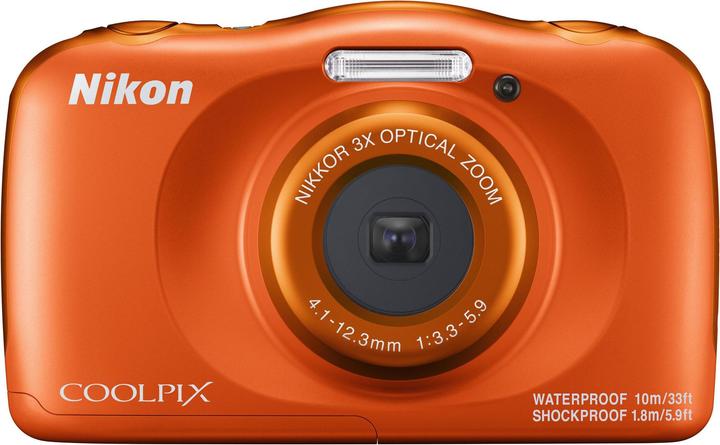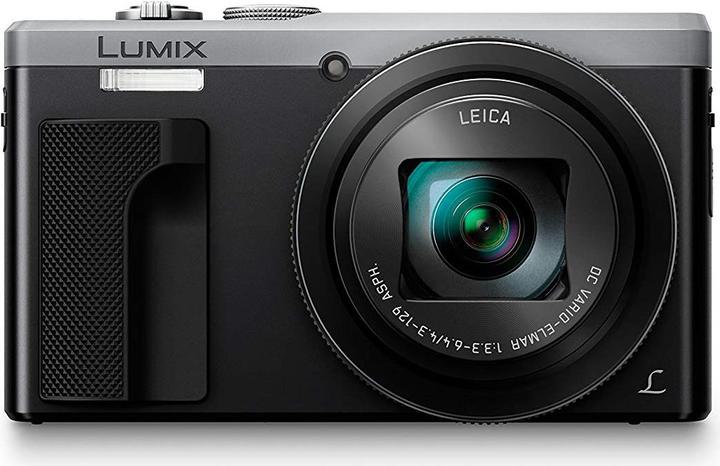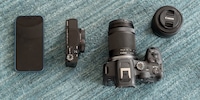

Do compact cameras have a future?
At first glance, compact cameras are finished. The future belongs to smartphone cameras - right? Not necessarily: the future may look different from the present. It depends on where investments are made in the next few years.
Smartphones have almost completely replaced compact cameras. A few niches remain: Underwater and action cameras, cameras for children who don't yet have a smartphone, cameras with a lot of zoom and a few high-end compact cameras that can do more than a smartphone.
The simple snappers have completely disappeared. In English, they are aptly called "point and shoot cameras" - point and shoot, that's all you have to do with these devices. That's what a smartphone camera is used for today. You have it with you anyway. Why take two devices with you when one is enough? Smartphone cameras are good enough for snapshots. And for special occasions, it's better to take the big camera. Compact cameras fall between the chair and the bench.
A compact camera would be perfect in terms of form factor. The physical wheels and buttons make it much easier and more efficient to use than a smartphone. And you'd rather carry it around with you than a large device with a range of lenses.
In other words: If compact cameras were as good as the big cameras, most people would prefer them. But is that even possible?
Miniaturisation needs small sensors
Technical progress means that things can be built smaller and smaller. We see this most clearly in computers, which have shrunk from the size of a living room to the size of a millimetre and also deliver billions of times more power. But cameras have also undergone impressive miniaturisation over the course of history.
Here comes the first objection: miniaturisation is only possible with small sensors. Flat devices such as smartphones cannot have a large sensor for physical reasons, as the distance to the lens - i.e. the focal length - must be in a sensible ratio to the sensor size. Of course, a compact camera should also be reasonably flat. This requires a small sensor and small sensors do not deliver as good an image quality as large ones.
There are compact cameras with large sensors - for example the Ricoh GR III. However, to ensure that the lens also remains flat, it must have a wide-angle focal length. A compact camera with a large sensor and telephoto lens will not work. It's exactly the same with system cameras. Many system cameras are very compact - but only as long as you don't attach a telephoto lens.
Good quality and small sensors are not a contradiction
If you look at the image quality of current top smartphones, there is no doubt that good image quality can also be achieved with small sensors. Even in the dark.

This is made possible by advances in sensor technology, fast lenses and, above all, software tricks. Some of these tricks are already available in compact cameras today, others could be adopted in the future.
The properties of the sensor are still significantly worse than those of a large professional camera. But this is no longer noticeable in most situations. The sensor size of a good compact camera lies between a smartphone and a professional camera. With these sizes, it should theoretically be possible to achieve an image quality that is good enough for almost all purposes.
Can compact cameras also use software tricks?
Smartphones work with multiple shots, among other things, to improve quality. For example, the same picture is taken several times with different exposures in order to capture both the bright and dark areas in detail. The whole thing is automatically combined to create an HDR image.

This is a relatively old trick that compact cameras have also been able to do for a long time. The same applies to multiple shots that eliminate image noise. Some compact cameras already had this feature before the rise of smartphones.
However, smartphones are much more advanced when it comes to software tricks. What Huawei achieves with the Night Shot mode or Google with Night Sight is a far cry from compact cameras. It's a combination of noise removal, auto-HDR and eliminating shaking by shooting without a tripod.
This shot was taken by Jan Johannsen during his test of the OnePlus 8 Pro, without a tripod.

A small sensor has a large depth of field. This is an advantage for macro shots, but less so for portraits - the background is often distracting if it is just as sharp as the foreground. Smartphones therefore have the function of artificially calculated background blur. With a secondary camera - or in the case of the Google Pixel with a special photo sensor - the distance of individual objects in the image is determined. Objects that are far away from the focus point are thus artificially blurred.

Even compact cameras can only produce real background blur to a very limited extent. But why not install a small secondary camera in a compact camera? One possible obstacle could be computing power - and the fact that camera manufacturers do not (yet) have the necessary expertise.
What if Huawei released a compact camera with the same AI capabilities as the P40 Pro? Compact cameras could be so much better if the same amount was invested in research and development as in smartphone cameras.
The best of both worlds
Compact cameras could benefit much more from smartphone developments than they do at the moment. But as they are not the same companies, the expertise of smartphone manufacturers remains largely closed to camera manufacturers. The two worlds overlap only slightly, with Sony being the closest. Not only because Sony also manufactures smartphones, but also because Sony builds and develops photo sensors for smartphones. For example, the RYB sensor in the Huawei Pro P40. It uses yellow instead of green in the Bayer colour filter, which lets more light through. Sony has also developed an "intelligent" sensor, which recognises subjects independently and thus relieves the processor. From a purely technical perspective, such achievements could also be used in compact cameras.
At the same time, compact cameras are already benefiting from developments in the professional camera sector. There, too, the focus is increasingly on computing power, software and artificial intelligence. For example, when it comes to autofocus tracking. Sony has incorporated the autofocus technology of the Sony Alpha 9 professional camera into the RX100 VII. This camera is incredibly fast, faster than most large cameras. Image processors are also often adopted for smaller cameras.
How realistic is that?
Compact cameras have huge potential, but it's not being utilised at the moment. The circumstances are not right.
- It is risky for camera manufacturers to develop a killer compact camera. As they only have partial access to the know-how of software tricks, they would have to put a lot of research into a device class that is currently barely profitable. With a compact camera that is as good as the big ones, they would also jeopardise their own system camera business.
- Smartphone manufacturers so far seem to have no interest in entering the declining compact camera market. Especially as they also have a problem with a lack of expertise. Companies such as Canon and Nikon have spent decades tinkering with and optimising their operating concepts. Smartphone manufacturers cannot make up for this with a snap of the fingers. They would also need a partner that manufactures high-quality lenses.
- The camera manufacturers could also build better compact cameras with the options they have now. They are probably not doing so for strategic reasons. Example: The Sony RX100 VII is a clear commitment to quality and has professional features, but its robustness is not at a professional level at all. It breaks too quickly for such an expensive camera.
On a purely technical level, the main obstacle I see is that the cameras would have to calculate much more. They would need much more powerful batteries than is currently the case and a processor that doesn't overheat.
Nevertheless, the biggest problems are not technical, but strategic. The small cameras are in a negative spiral. Because few people buy compacts, little is invested in their development. As a result, even fewer people are buying compact cameras and development is being cut back even further.
It seems that we will have to wait even longer for the glorious return of compact cameras. If it comes at all. But the tech world has often surprised me. In this case, a surprise would be very welcome. <p
My interest in IT and writing landed me in tech journalism early on (2000). I want to know how we can use technology without being used. Outside of the office, I’m a keen musician who makes up for lacking talent with excessive enthusiasm.






